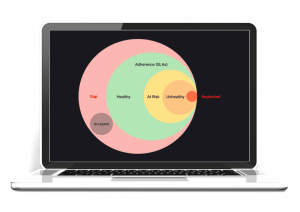HOW TO: Spot the Right Consumer Cloud for Your Media
![]() The entrée a big name like Google is confirmation of the unwavering demand for cloud storage. The evolution of data and technology has brought us to the new school of storage, accessed via web service APIs, cloud gateways and web-based interfaces. Today we present a multi-dimensional comparison of cloud storage heavyweights and the unanswered questions surrounding the booming market.
The entrée a big name like Google is confirmation of the unwavering demand for cloud storage. The evolution of data and technology has brought us to the new school of storage, accessed via web service APIs, cloud gateways and web-based interfaces. Today we present a multi-dimensional comparison of cloud storage heavyweights and the unanswered questions surrounding the booming market.
What the experts say
In lieu of the much awaited launch, Sundar Pichai, SVP of Chrome and Apps enumerated some of the capabilities of Google Drive and how to install it, in his Google Blog.
“Drive is built to work seamlessly with your overall Google experience. You can attach photos from Drive to posts in Google+, and soon you’ll be able to attach stuff from Drive directly to emails in Gmail. Drive is also an open platform, so we’re working with many third-party developers so you can do things like send faxes, edit videos and create website mockups directly from Drive. To install these apps, visit the Chrome Web Store—and look out for even more useful apps in the future.”
But Google’s debut in the market does not necessarily mean the search giant will easily dominate the market. In a quick response to the introduction of Google Drive in the market, SugarSync pointed out the limitations of its newest competitor in cloud storage—these include no multi-folder sync options, problems around the conversion process to Google Docs, limited ability to edit offline, restricted sharing and no music streaming.
“Everyone in the Cloud market has known that Google Drive has been coming for the past four years – so none of us should be surprised. And for the last 4 years, SugarSync has been focused on developing not just a functional Cloud service, but the best Cloud service – one that works the way you work and doesn’t make you dependent on any particular platform.”
“We remain committed to being the leader in letting you access, sync and share ALL of your folders (not just one) on ANY device (including more mobile devices than any other Cloud service) in a way that is consistent with how you already work. And we also remain committed to constant innovation and adding additional capabilities in the future.”
![]() Founder and CEO of storage backup solutions, Charlie Woods provided his own insight into Google Drive:
Founder and CEO of storage backup solutions, Charlie Woods provided his own insight into Google Drive:
“Google Drive makes that easier by an order of magnitude. It works just like Dropbox, so instead of dealing with a web interface, you can share files just by dragging them to your Google Drive folder on your computer, something familiar to every computer user.
“We expect to see extremely rapid, substantial adoption of Google Drive by both businesses and consumers. The added convenience of having your files instantly available on any device is a huge win.”
But it’s important to remember that while Google Drive looks to be a fantastic sync solution, it’s not a backup solution–and in fact, sync makes backup even more critical.”
“And Spanning Backup works with Google Drive today. Any file you store on your Google Drive is automatically backed up, so if it’s ever deleted or corrupted, you can recover in just a few seconds.”
Where does cloud storage fit in?
![]() Virtualized storage has not only driven popularity and attention to the cloud, but also innovations and research. These developments help bridge the concept of cloud to the consumers, many of which are not into hardcore IT.
Virtualized storage has not only driven popularity and attention to the cloud, but also innovations and research. These developments help bridge the concept of cloud to the consumers, many of which are not into hardcore IT.
Our own Alex Williams sees Google Drive as another reason for businesses not to invest in setting up IT departments. But solutions that run on a similar approach give the cloud a massive boost. It also presents a line strategic threats to traditional storage leaders. While there are weaknesses, Google’s presence in the market will be a game-changer, especially with the pricing and collaboration features the product boasts. Perhaps what best separates Google Drive from the rest is that it is a hybrid of cloud storage and cloud computing that permits the creation and editing of documents, spreadsheets and presentations. The search giant is seemingly moving to this direction for a long-term approach.
Back it up & keep it secure
Perhaps one of the biggest fears looming around cloud storage is the thought of data center collapse. This is where backup solutions come in. The reinvention of storage in the cloud has also paved the way for backup services to thrive in an industry that feeds aon data. SugarSync and Box are two of the most active players in this field. The former just inked a deal with Lenovo last March to rebrand the latter’s cloud services.
Since cloud storage solutions involve storing and backing up data, security issues will follow. Alan Murphy of F5 Networks cited the extra layer of complexity that is compliance, for the virtualized storage services, noting, “data transmission and storage can fall under many regional regulations involving the security and availability of personal information.
“For regulations such as HIPAA in the United States and the Data Protection Directive in the European Union, organizations are required to adhere to data compliancy laws throughout the life of the data. When data is stored on-premise, as it is with the traditional data center model, an organization has complete control over where the data sits at rest, how the data is stored, and who has access to the data. Introducing cloud storage changes that on-premise control model.”
Data residency is one key issue that has remained unsolved to this day. Whether it is legal for U.S. users and enterprises to store data in another country remains to be seen. Another question pertains to privacy and specific industries, asking whether or not EU nations allow healthcare data be kept in the United States. These are some of security and compliance issues that are still being resolved by companies and government organizations alike.
Cloud Storage Services: Take Your Pick
![]() The anticlimactic launch of Google Drive has stirred the competition to new heights. Six years in the making, Google Drive had its fair share of press hype. We’ve followed the G-Drive story since 2010 until its recent public intro. As the competition becomes fiercer, other industry leaders refocus their brands and revamp their services. PCWorld has come up with a comparative chart between top players in various dimensions.
The anticlimactic launch of Google Drive has stirred the competition to new heights. Six years in the making, Google Drive had its fair share of press hype. We’ve followed the G-Drive story since 2010 until its recent public intro. As the competition becomes fiercer, other industry leaders refocus their brands and revamp their services. PCWorld has come up with a comparative chart between top players in various dimensions.
Google Drive
Google Drive extends a free basic account for the first 5GB. A monthly payment of $30 kicks in at 25GB. The price hikes at 100GB until 16TB—the largest offering in the game of cloud storage. The size limit per upload is 10GB, and each paid account expands user’s Gmail to 25GB, free 1GB storage for Picasa and more or less 20,000 songs in Google Music. Android users already have the mobile version of Google Drive, and iOS is coming soon. But, there is no news yet as to whether or not it will be available on Windows Phone devices. Mac and Windows-based PC’s can now access Google Drive. Other notable features include collaborative document editing, public and private file sharing, web access, video streaming and third party app-integration. However, as mentioned earlier, local folder syncing is not supported. Using Google Drive will allow you to integrate Google services like Docs and Search.
Dropbox
![]() Frontrunner Dropbox offers a 2GB free basic account, while paid solutions start at 50GB up to 1TB that costs $795 and hosts 5 users. There is no limit as to the file size per upload through desktop apps. There is an extra 0.5GB per friend referral for basic and 1GB for paid accounts, which can go up to 18GB and 32GB of additional storage, respectively. DropBox presently supports Android, iOS and Blackberry. Like Google Drive, Dropbox has enabled public and private sharing and third-party app integration, and does not have local folder syncing option. They differ in the sense that DropBox does not support collaborative document editing. The company is regarded as one of the most successful graduates of Y Combinator, a famed tech incubator that aids startups in financial, resources and training needs (see here for a few tips on finding the right incubator for your startup).
Frontrunner Dropbox offers a 2GB free basic account, while paid solutions start at 50GB up to 1TB that costs $795 and hosts 5 users. There is no limit as to the file size per upload through desktop apps. There is an extra 0.5GB per friend referral for basic and 1GB for paid accounts, which can go up to 18GB and 32GB of additional storage, respectively. DropBox presently supports Android, iOS and Blackberry. Like Google Drive, Dropbox has enabled public and private sharing and third-party app integration, and does not have local folder syncing option. They differ in the sense that DropBox does not support collaborative document editing. The company is regarded as one of the most successful graduates of Y Combinator, a famed tech incubator that aids startups in financial, resources and training needs (see here for a few tips on finding the right incubator for your startup).
Box
If you are running an enterprise and would like to try out cloud storage solutions, Box.net may adequately serve your requirements. It carries a variety of features that are mainly created for business purposes, such granular permissions, role-based access, user management, group permissions, comments, file expiration, file locks, tagging and Google apps integration. Box also has widgets that allow embedding of files and folders in your web pages, and has a built-in viewer for common types of files that DropBox and others lack. You can use up to 5GB of free storage space provided by Box. Minimum monthly premium price for the service is $9.99 for 25GB, and max is at $19.99 for 50GB. It has an Android and iPhone app, but is not supported on Windows Phones. Business or enterprise editions are the ones that offer Windows and Mac apps and syncing any local folders.
iCloud
![]() The priciest of all is iCloud. This is not surprising as the parent company, Apple, is known for its costly products and services. It offers free 5GB account and $20 monthly charge for 10GB, and $100 for 50GB. You may only upload up to 25MB for basic account holders, while paid accounts are allowed up to 250MB. There are free 5GB stacks on paid storage. Only docs and email are counted, which makes the last 1000 photos captured be sent to Photo Stream and settle there for 30 days for syncing. A cost of $25 annually will let you store as much as 25, 000 tracks not purchased through iTunes. iCloud is exclusive to iOS users.
The priciest of all is iCloud. This is not surprising as the parent company, Apple, is known for its costly products and services. It offers free 5GB account and $20 monthly charge for 10GB, and $100 for 50GB. You may only upload up to 25MB for basic account holders, while paid accounts are allowed up to 250MB. There are free 5GB stacks on paid storage. Only docs and email are counted, which makes the last 1000 photos captured be sent to Photo Stream and settle there for 30 days for syncing. A cost of $25 annually will let you store as much as 25, 000 tracks not purchased through iTunes. iCloud is exclusive to iOS users.
A message from John Furrier, co-founder of SiliconANGLE:
Your vote of support is important to us and it helps us keep the content FREE.
One click below supports our mission to provide free, deep, and relevant content.
Join our community on YouTube
Join the community that includes more than 15,000 #CubeAlumni experts, including Amazon.com CEO Andy Jassy, Dell Technologies founder and CEO Michael Dell, Intel CEO Pat Gelsinger, and many more luminaries and experts.
THANK YOU

















